Do awesome elementary math activities with an ocean theme! Whether you’re planning a trip to the beach or doing an ocean unit, these hands-on activities will make math time more fun.
There are so many ways to add a fun ocean theme to any math concept you need to work on. If these activities don’t address the specific the skill you’re looking for, then hopefully you’ll find the inspiration to create a variation that works for you.
We also have a post with Ocean Science Experiments, so be sure to check those out as well.

We will be using little seashells in several of these activities. If you live near the coast and can collect your own, that’s great! We used two little bags of shells that I bought at Hobby Lobby. Other craft stores will likely have something similar.
Two of the activities use printable recording sheets, which you’ll find at the bottom of the post.
Seashell Addition and Subtraction
We grabbed a little wooden tray that came with a Melissa and Doug craft set. Find a shallow tray or dish of some sort and fill it with a layer of sand. It doesn’t take much sand, but the sand adds a fun touch for sure.
Place a straw in the center of the tray as shown below. Now you can build addition problems with shells! Write out addition sentences on index cards for kids to solve.
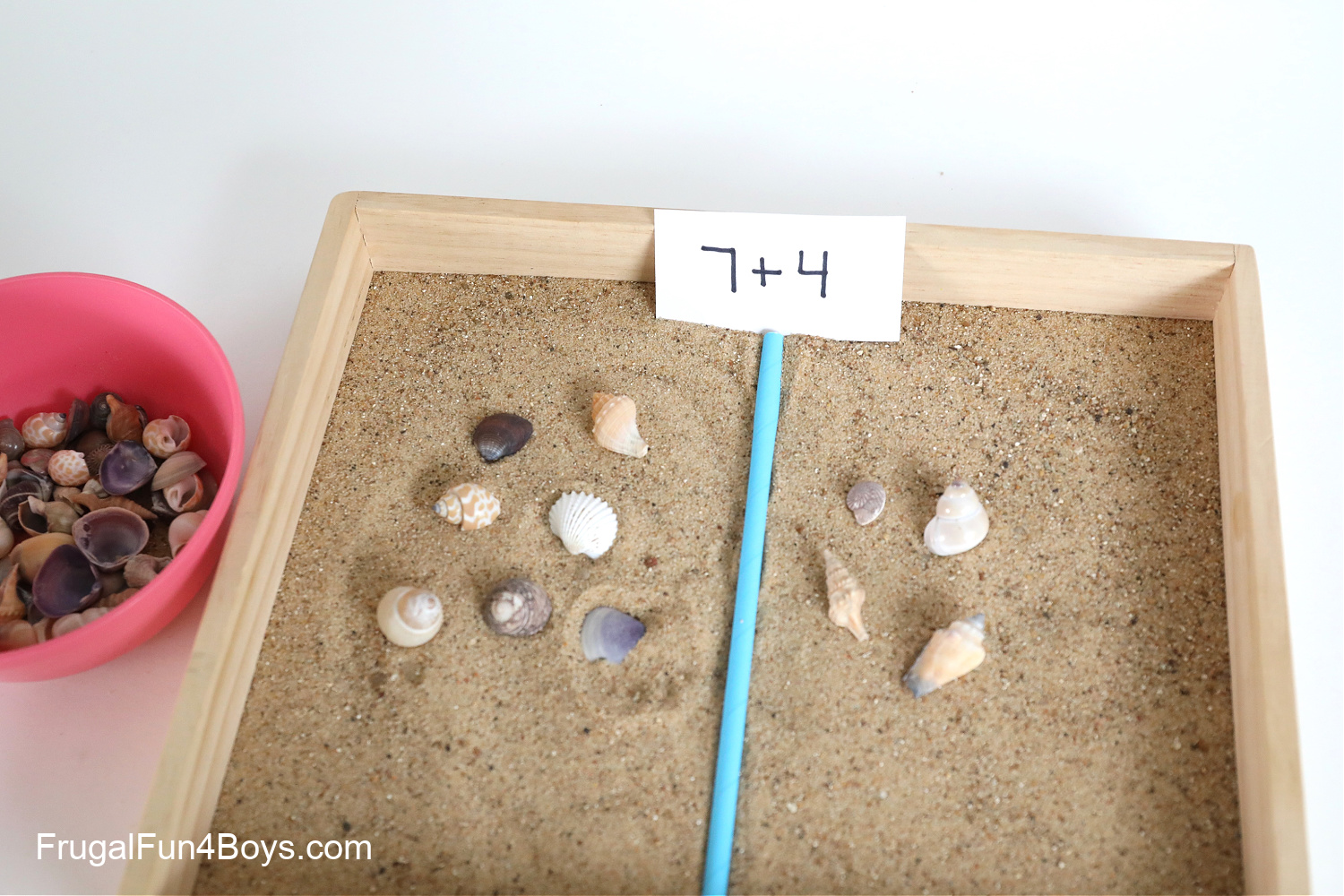
The straw is not essential. If you want to just lay out 7 shells and then 4 more and count them up, that is great.
For seashell subtraction, write out several subtraction sentences on index cards. Students can use the shells to solve the subtraction sentences in two different hands-on ways.
Method #1: To subtract 10 – 3, make a row of 10 shells, and then remove 3 to show that 7 are left.
Method #2: To subtract 10 – 3, make a row of 10 shells and then put a row of 3 shells next to it. Compare the two rows to see that the difference between 10 and 3 is 7.
Seashell Arrays (Multiplication)
Supplies Needed: Sand tray, small seashells, two dice, printable recording sheet
First, roll two dice.
Then build an array with the two numbers you rolled. It might be 3 x 5 or 6 x 2 or 4 x 5 or something like that.
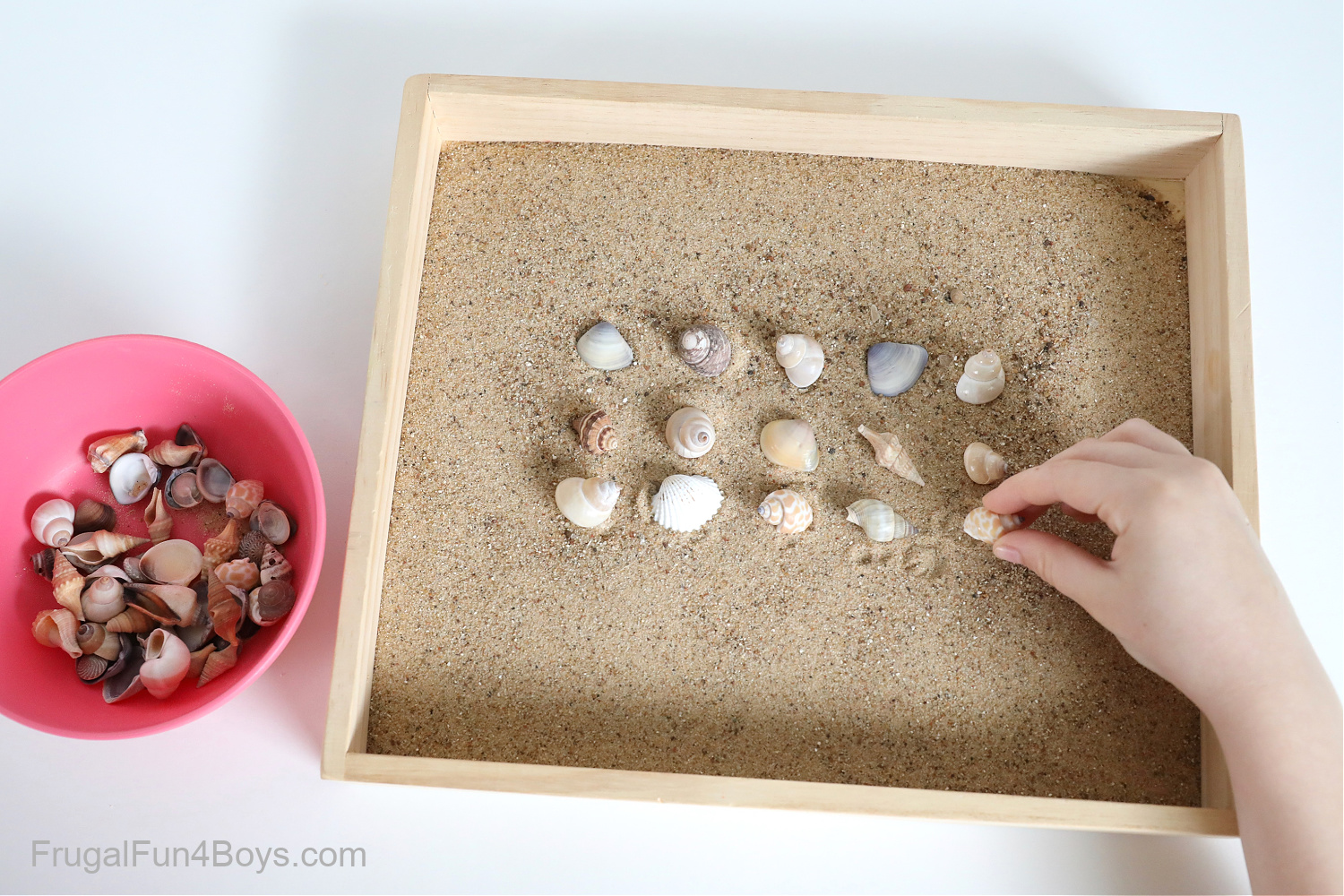
After you build your array, write out the multiplication sentence on the recording sheet. We laminated ours and used a dry erase marker.
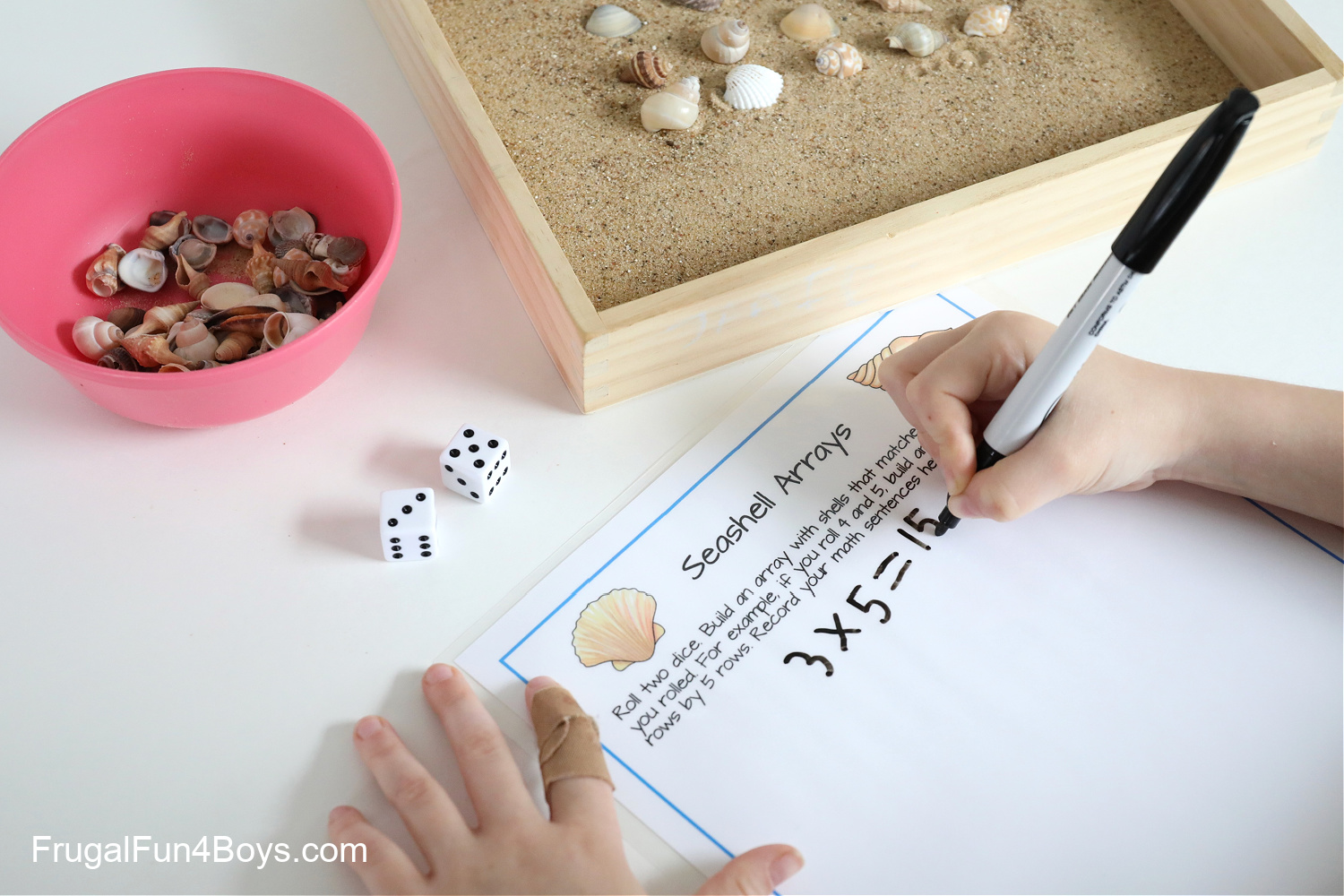
Keep rolling the dice and build lots of different arrays! Great multiplication practice.
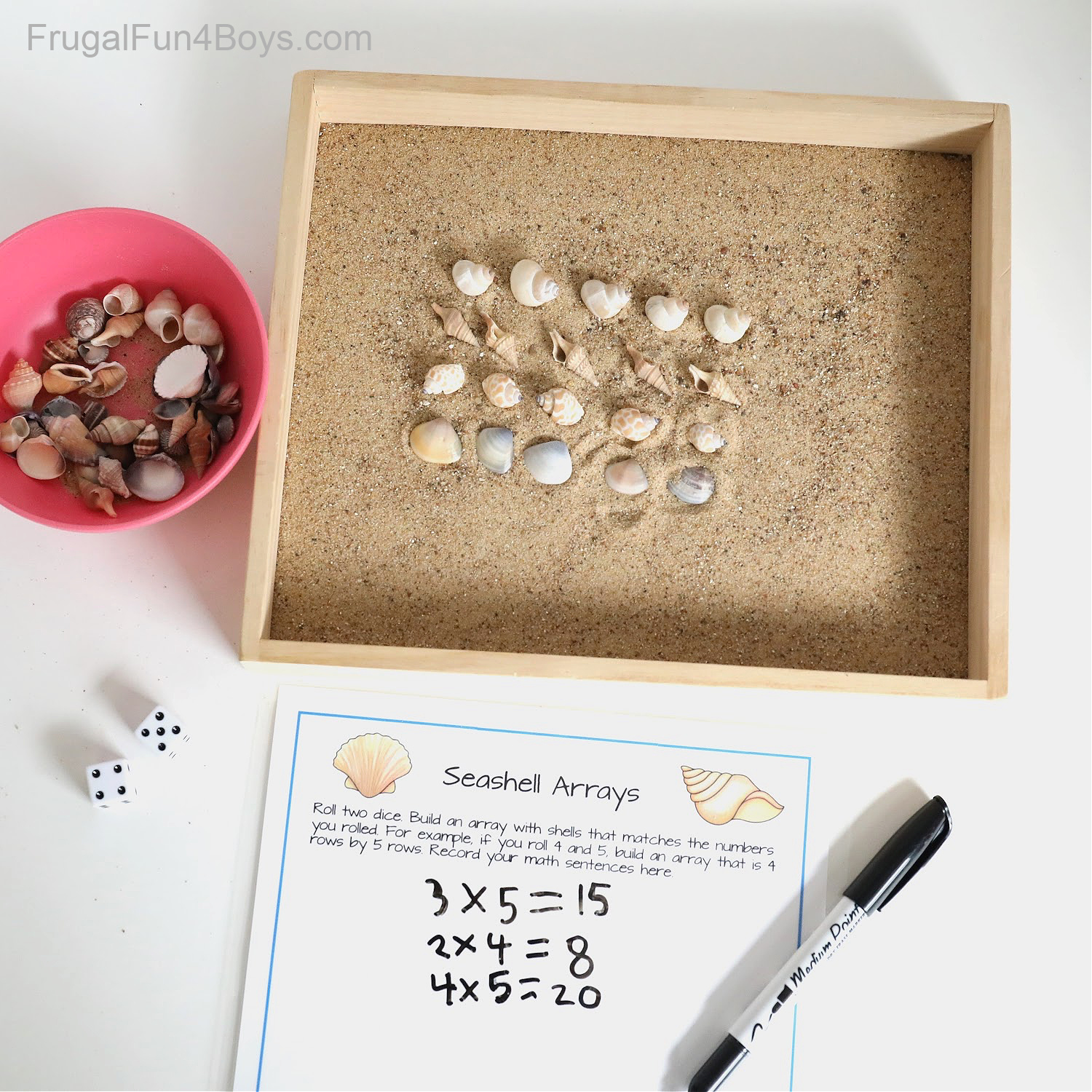
Measuring the Size of Ocean Animals
It’s really fun to go outside and measure the length of ocean animals, especially the big ones!
There are a few ways to do this.
First, we measured the size of a Green Sea Turtle. Their shells can be about 4 feet long. We drew a 4 ft. shell and then added a head and legs.
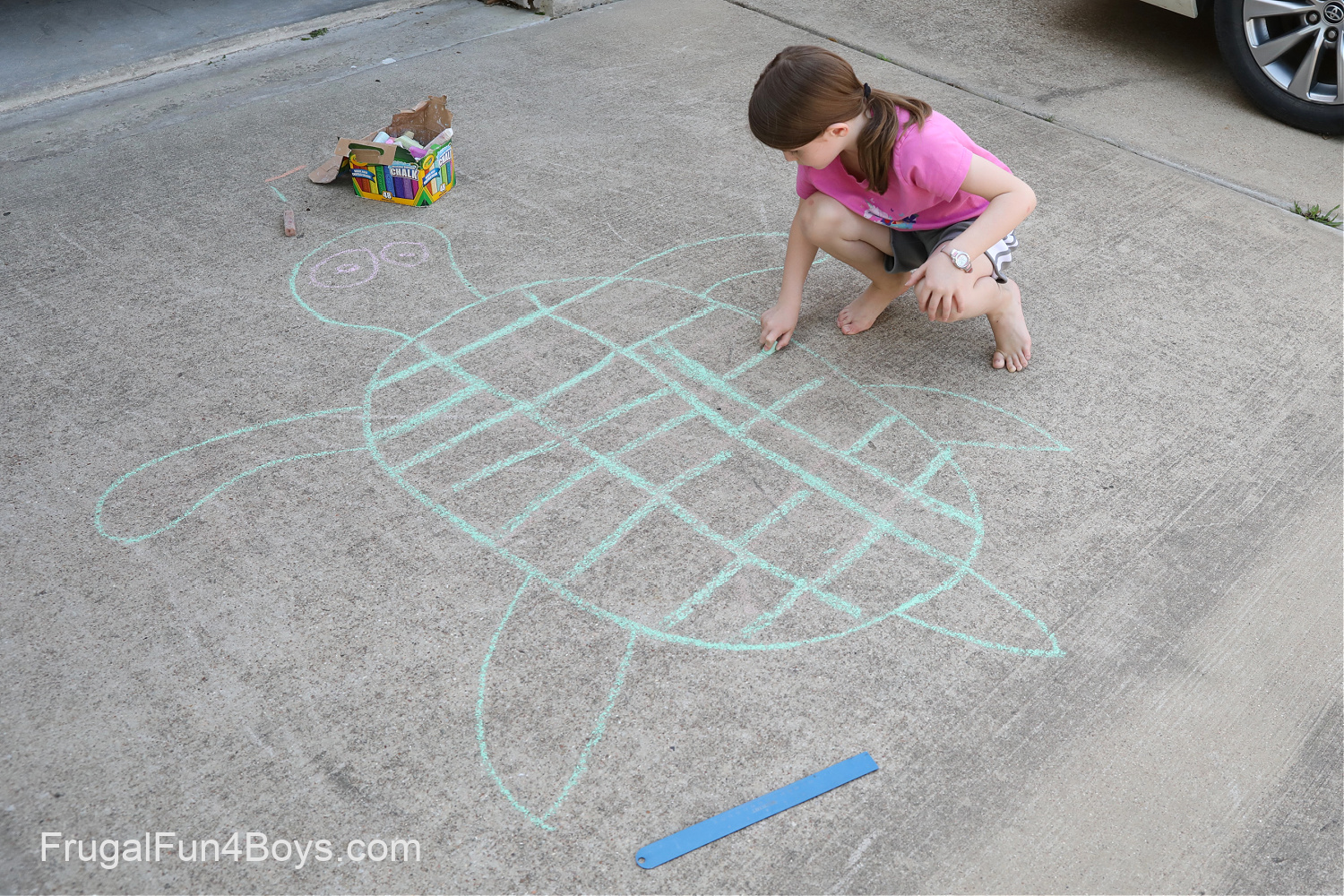
Then we cut a piece of yarn the length of an Orca. We made it 23 feet long, which would be the size of a small male or an average female. We went outside and stretched out the yarn on the sidewalk. That’s a really big whale!
You’ll also want to try something bigger like a humpback whale! They can be 46 ft. – 52 ft. long, and surprisingly, it’s the female that is bigger than the male.
Seashell Measuring
Here’s a fun way to do some measuring with non-standard units. Use shells that are similar in size to measure the length of objects from around the house.

The shells in our bag of assorted shells from Hobby Lobby were all fairly uniform in size. We measured a paperback chapter book, a pencil, a shoe, and more.
Other ideas for things to measure: stuffed animal, toy car, cracker box, length of your hand, action figure, small doll.
Since you can’t stack the shells (unlike math cubes that can build a tower), kids will need to measure objects that can lay down on the table.
Seashell Graphing
This was maybe my favorite activity, although I really like the arrays too!
Create a simple graph for your shells by drawing straight vertical lines on a sheet of paper.
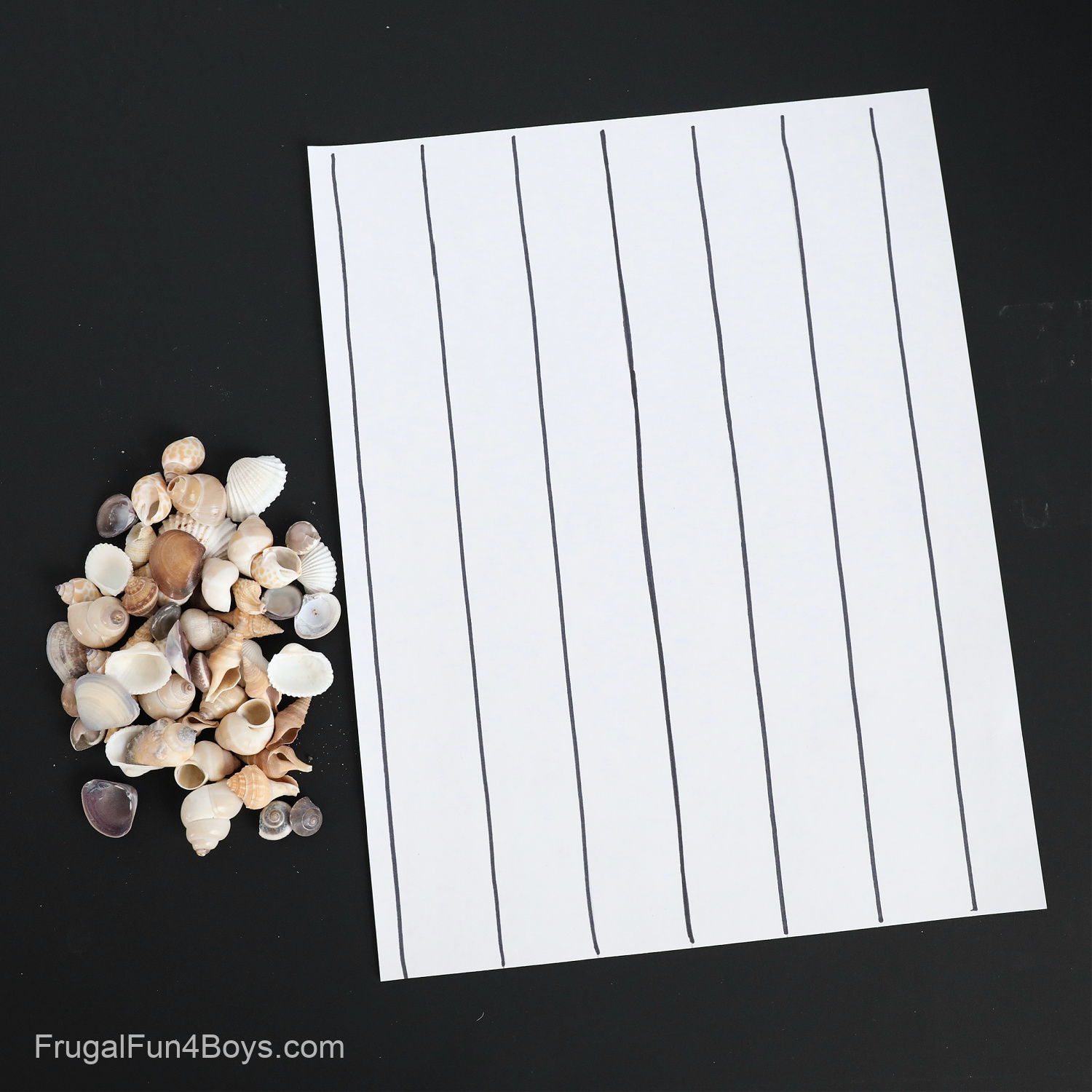
Grab a handful of shells and have your child estimate which type of shell they have the most of. Then sort them, graph them, and count them up!
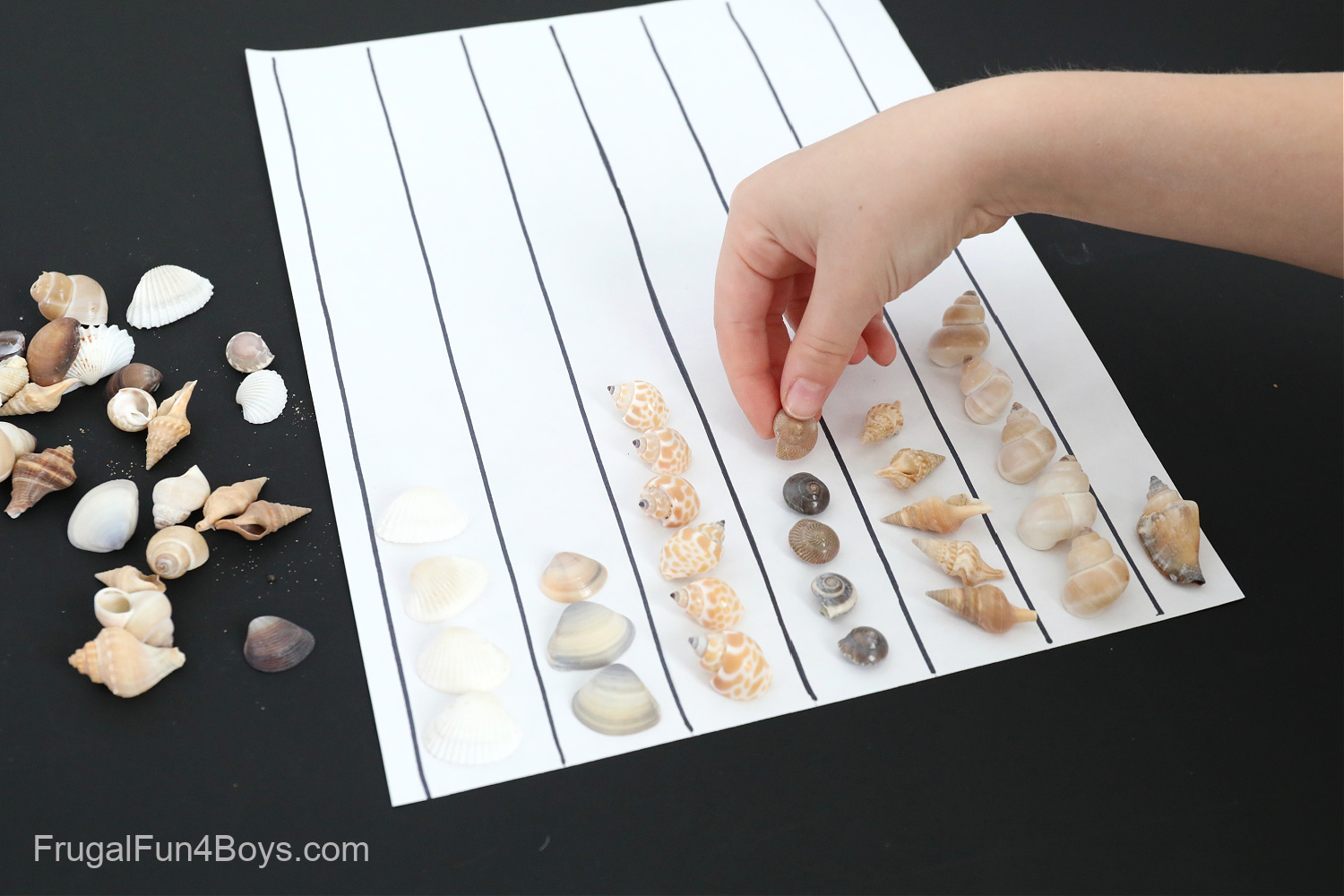
Have fun with OCEAN MATH!
Ready to print your recording sheets? Visit the link below, and you can download or print from there.
RECORDING SHEETS HERE: Ocean Math Recording Sheets
Don’t forget to stop by our Ocean Science Experiments! Kids will love these simple experiments.
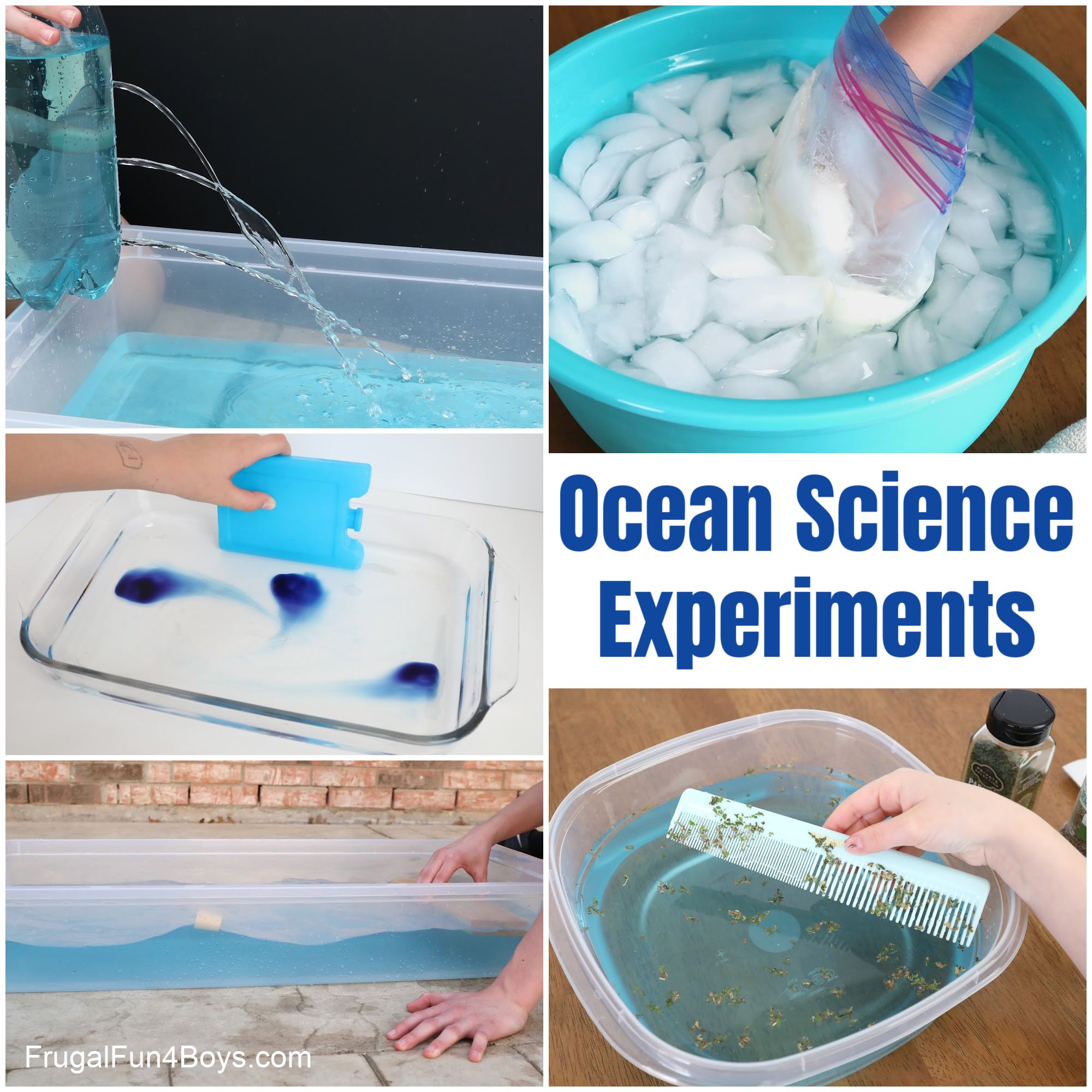
Need more math ideas? We have lots of ideas for making math hands-on and FUN!
These LEGO Math Activities are perfect for kids in the elementary grades (K – 5th, or ages 5 – 10).

You can also learn just about any elementary math concept outside with sidewalk chalk. Check out these Sidewalk Chalk Math Games!

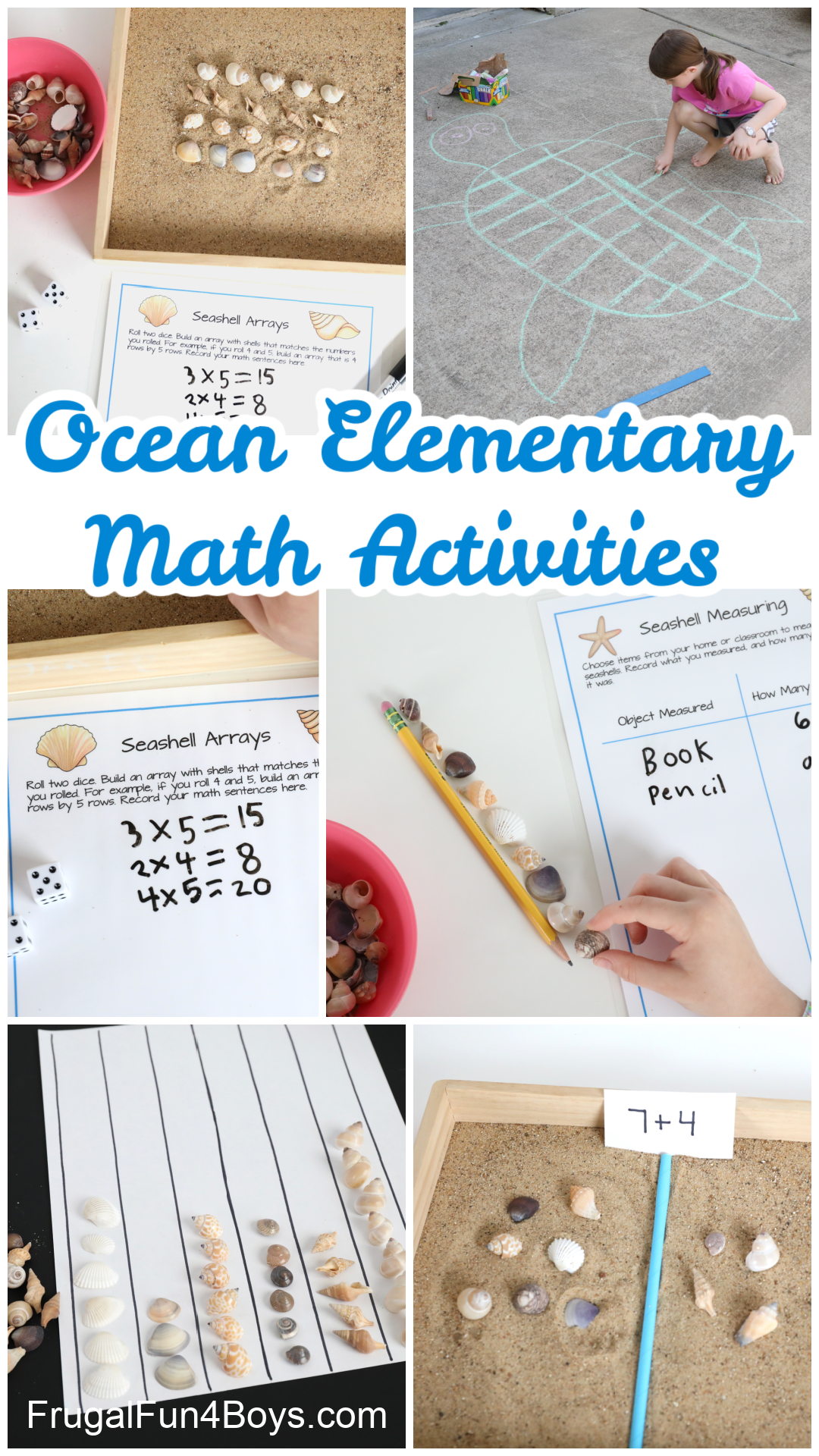

0 Comments
Post a Comment